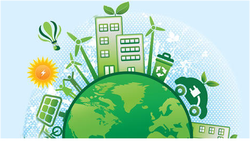BIA CARBON STANDARDS AND TRADING
Carbon Standars

Both the voluntary and compliance markets require carbon standards, which verify carbon offsets and validate the trading of carbon units. These standards ensure the verification of projects while at the same time allowing clients to control their units that are being traded. There are several types of carbon standards and/or registries: VCS, CDM, and RPS. Each standard has its own requirements for validating and verifying emission reductions. Types
Carbon standards and registries are used for the approval of emission reduction projects through a series of steps and requirements. These standards vary depending on the range of projects they cover:
Carbon standards and registries are used for the approval of emission reduction projects through a series of steps and requirements. These standards vary depending on the range of projects they cover:
- VCS (Verified Carbon Standard) is used to approve voluntary carbon credits and is compatible with the Kyoto protocol.
- CDM (Clean Development Mechanism) is a financing mechanism that allows the purchase of carbon credits to fulfill compliance requirements.
- RPS (Renewable Portfolio Standard) is a regulation that requires an increase in the production of renewable energy such as the wind, sun, or biomass.
Emissions Trading

Emissions Trading
Emissions trading is one method of approaching the goal of emission reduction using a market-based approach. In this method, carbon offsets are used. These carbon offsets place a limit on the amount of carbon dioxide that could be released into the atmosphere. They are sold as allowances on six different exchanges. The growth of the emissions trading market is evident due to the common global goal of reaching sustainability through various projects. The carbon market, which is part of the carbon emissions trading, trades and tracks carbon dioxide in the form of a commodity. Countries use carbon emissions trading to effectively reduce their carbon emissions.
Exchanges
Overall, there are a couple of major exchanges for emissions trading and there are several trading schemes as well, including the following:
Emissions trading is one method of approaching the goal of emission reduction using a market-based approach. In this method, carbon offsets are used. These carbon offsets place a limit on the amount of carbon dioxide that could be released into the atmosphere. They are sold as allowances on six different exchanges. The growth of the emissions trading market is evident due to the common global goal of reaching sustainability through various projects. The carbon market, which is part of the carbon emissions trading, trades and tracks carbon dioxide in the form of a commodity. Countries use carbon emissions trading to effectively reduce their carbon emissions.
Exchanges
Overall, there are a couple of major exchanges for emissions trading and there are several trading schemes as well, including the following:
- The Carbon Trade Exchange (CTX) is the world’s biggest platform for trading voluntary carbon offsets.
- European Climate Exchange (ECX) is a liquid carbon trading exchange mainly for the European Union’s EU ETS.
- EU ETS is a major global emissions trading scheme.
- GreenX is a marketplace used for trading carbon credits such as EUAs and CERs.
|
Call us to discuss your business
|
Multimedia Source

|
